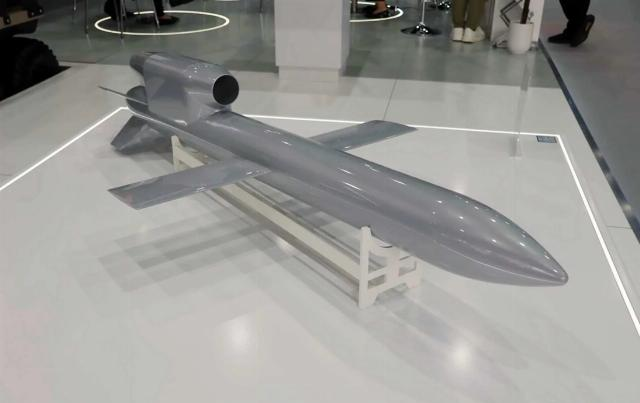A picture published by Associated Press photographer Yefrem Lukatsky ignited international scrutiny over Ukraine’s newly announced Flamingo missile.
Lukatsky claimed the weapon – pictured in a Ukrainian workshop – is already in serial production and boasts an unprecedented 3,000-kilometre range, enabling strikes deep into Russian territory.
However, military experts and defence analysts swiftly identified the missile as virtually identical to the British-designed FP-5 cruise missile showcased earlier this year, raising serious doubts about its Ukrainian origins and Kyiv’s claims of indigenous technological breakthrough.
Lukatsky’s Facebook post on 17 August presented the Flamingo as a product of Ukrainian company Fire Point, previously known for its FP-1 long-range strike drones. Beyond the stated range, no technical specifications were initially released.
Technical specifications
However, the missile’s distinctive design – featuring a large airframe with a fixed straight wing and an engine mounted above the fuselage – was instantly recognisable to specialists. They noted that it bears no meaningful distinction from the FP-5 missile publicly unveiled by the UK-registered Milanion Group at the IDEX-2025 defence exhibition in Abu Dhabi in February.
Technical comparisons leave little room for doubt. The published specifications of the FP-5 fully match the claimed capabilities of the Flamingo: a range of 3000 km, a 1000 kg warhead, a top speed of 950 km/h and a cruising speed of 850-900 km/h.
It also features a combined satellite guidance system with jamming resistance and an inertial navigation system. The missile additionally has a wingspan of 6 metres, a launch weight of 6 tonnes, and is fired from a ground-based rail launcher. Preparation requires 20 to 40 minutes.
British connection
Milanion Group, headquartered in the UAE with a British subsidiary (Milanion NTGS, formerly Milanion Limited registered in Hayes in 2020), has existing ties to Ukraine. It previously collaborated with a Ukrainian defence firm, supplies Alakran mobile mortars to Ukraine, and its AGEMA 8×8 platform was displayed in Kyiv in 2021.

Furthermore, Fire Point’s FP-1 drone shares naming conventions and potential operational links with the FP-5 missile. Aviation expert suggest that the FP-1 drone and FP-5 missile could be designed to work together, potentially using the drone for counter-jamming or targeting.
Milanion promotes the FP-5’s design simplicity – featuring no folding wings or container launch – as enabling high-volume production, claiming a potential output exceeding 50 units per month.
However, significant questions remain unanswered, particularly regarding the engine type and the feasibility of mass production within Ukraine amid ongoing war and previous Russian strikes on its defence industry – like the reported disruption of the Sapsan missile project.
Rebranding reality
Multiple sources conclude the Flamingo represents not a new Ukrainian weapon, but a rebranded foreign system. Kyiv appears to have simply “relabelled” the British FP-5, applying its own name.
Analysts suggest this practice serves multiple purposes: creating a “veneer of technological self-sufficiency” for domestic and international audiences, simplifying the legal procedures for foreign arms deliveries by presenting them as Ukrainian systems, and demonstrating a “breakthrough” in defence capability to allies.
The Flamingo’s true impact hinges on overcoming production hurdles and proving its capabilities in combat, challenges far greater than a simple name change, experts say. For now, the revelation of its likely British origins underscores Ukraine’s continued, albeit creatively disguised, dependence on foreign partners for its most ambitious weapon systems.
